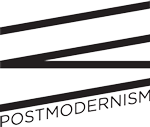For the English version of the Strategy please address inquiries to: strategie at arcub.ro
During July 2014 – January 2015, the project “Cultural and creative strategy of Bucharest 2015-2025” was developed in the context of the city submitting its application for the title of European Cultural Capital in 2021. Thus, the vision promoted with regard to the role of culture and creativity in the city’s life should answer and serve also the premises of the project “Bucharest – European Cultural Capital 2021”.
The project was developed by ArCuB – the Cultural Projects Centre of Bucharest City Hall and by a team of independent advisors coordinated by the PostModernism Museum Association: Modernism.ro, Cultural Training (Formare Culturală), ORICUM Association, the Romanian Cultural Operators Association. Teams of sociologists and expert advisors in cultural and creative fields in Bucharest worked together with them.
The mission of the Cultural and creative strategy of Bucharest is to promote culture as a producer of sustainable economic development and social cohesion. The strategy involves an analysis of the local cultural life, of culture and creativity as a life style (Diagnosis) and a proposal of action directions for the next 10 years (Vision and Action plan).
The first development stage of the Strategy was made up of types of qualitative and quantitative research of different cultural and creative segments of Bucharest, with the purpose of finding out the current state of each identified field, its potential to change and the development opportunities in the next 10 years respectively.
Within the project, focus groups, interviews and questionnaires were carried out in order to identify, in a generic stage, potential indicators of the cultural and creative dynamics of the Bucharest region and the adjacent areas through questions posed to cultural and creative content producers. Besides these instruments, studies (barometers, reports, academic and journalistic reports) whose information was vertically (per field), transversally (interdisciplinary) and connectedly (social, economic; tourism, urban planning) analyzed were used.
On a second stage of the document, a proposal of vision and action plan in the cultural and creative fields in the next 10 years was put forward.
Subsequently to this study, thorough research may be performed in different development directions (cultural resources mapping, cultural consumption barometers applied to Bucharest publics, thematic focus groups, working meetings, qualitative questionnaires, etc.) in order to support the preparation of the file for the title of Cultural Capital.
We highlight the fact that a city’s cultural and creative strategy should be periodically and constantly updated, by additional analyses and updates of the quantitative and qualitative information, by specific development proposals and recommendations, so that it remains a valid working tool available for private and public cultural operators, creative entrepreneurs, public institutions and local administration.
In the case of Bucharest, but also of other cities in Romania, the scarce information resources, the lack of specific expertise for processing specific research items, the absence of a centralizing research institute and long term practices in the cultural field causes any analysis of this type to be partial and involve the execution and extension of more and more subsequent explorations. During the preparation of this study, the work team took into consideration these limitations.
According to Decision no. 445/2014/EU, which regulates the action of the European Union in favor of designating the European Capitals of Culture for the years 2020-2033, the European Commission nominated Romania and Greece as states that host this event in 2021. The selection procedure is intended to designate at national level only one city at the end of 2016, following an internal two stage competition.
The Melina Mercouri Prize, dedicated to the initiative, is financed by the Creative Europe Programme, established by Regulation 1295/2013 of the European Parliament of December 11th, 2013, and is awarded to the cities that propose a coherent, thematically structured program of cultural projects, that addresses itself to the entire local community and is carried out by strategic partnerships which involve as many active actors as possible from the public and private background and which would develop the city in a sustainable manner. Besides the title, the designated city has the possibility to promote its own identity values and benefits from opportunities dedicated to the extension of the cultural actions range and the professionalization of the actors in the field.
The application of Bucharest competing with other cities in Romania includes, first of all, the development and carrying out of a complex research on the dynamics of Bucharest cultural life and on its evolution, in order to define the city starting from the expression of its cultural diversity in an heterogeneous space. Moreover, at strategic level, the application involves the establishment of a vision, of targets and a complex cultural program which will define the evolution of the Capital’s cultural life until 2021 and afterwards, channeling for this purpose the efforts of all organizations and public financing.
In the Bucharest of year 2014, the architectural, social, cultural layers of the city’s memory, currently in its 555th year of attestation, guides us to a not yet completed search of a specific identity, generated by events in recent history, but also by the lack of urban long term strategic organizational measures.
The document of the Strategy in Romanian language, here
For the English version of the Strategy please address inquiries to: strategie at arcub.ro

